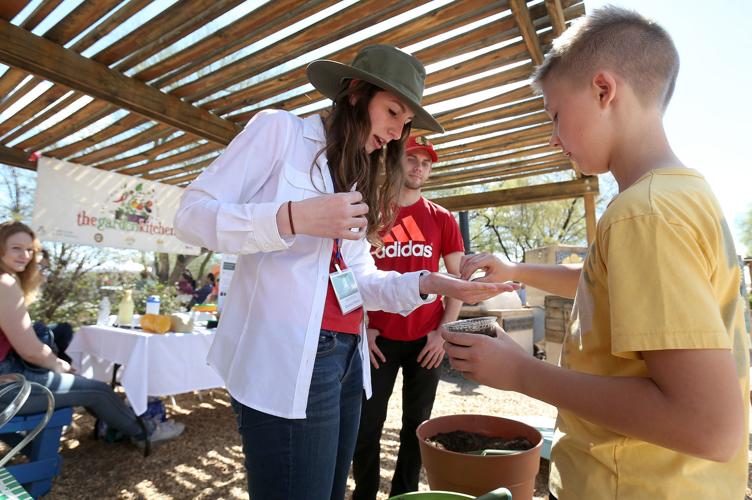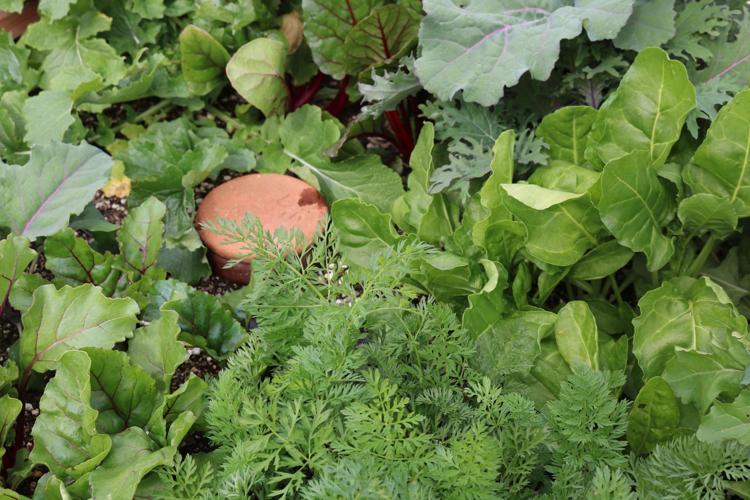Adopting sustainable practices in home landscaping and gardening will be at the forefront of the second annual Sustainable Landscapes Expo on March 23.
Exhibitors plan to focus on rainwater harvesting, efficient irrigation, native plants, edible gardening and purposeful landscape design and maintenance.
All of these are hallmarks of gardening sustainability. But what is a sustainable landscape at its core?
“I like to think in terms of an equation,” answers Tanya M. Quist, an associate professor of practice in the University of Arizona school of plant sciences. She’s also a UA Cooperative Extension specialist and directs the campus arboretum.
Quist likens sustainable practices to a savings account. You put stuff in the account: water, labor, materials, fertilizer, chemicals. Then you have yields: reduced heating and cooling costs, personal comfort, animal habitats, and rainwater flow control.
“Think of the urban landscape in terms of input and output,” she suggests.
Take turf grass in a yard, for instance. You’ll need 60 inches of water a year to irrigate it — nearly five times as much as what we get in rainfall. Even adding in benefits, that may not be sustainable, Quist says.
Using this equation, even native plants in someone’s yard may not be sustainable.
“Our built environment is nothing like the natural environment,” says Quist, whose research interests include urban sustainability and plants in stressful environments.
Heat islands, diverted water flows, unfavorable microclimates and poor maintenance challenge native plants.
“I feel very strongly that the default is to select a native plant,” she says, “but the ideal is that you have people educated enough to select a plant that is better suited to (a) particular site.”
It’s that level of education that expo exhibitors hope to impart.
Civano Nursery’s certified arborists will answer questions about taking care of trees “and talk to people about the right tree in the right place,” says Jackie Lyle, the garden center’s logistics manager.
Civano Nursery also is giving away 100 trees in 5-gallon containers. “They’re mostly native or arid-adapted,” Lyle says.
Michael Ismail, who owns Thrive and Grow Gardens, looks at sustainability differently from Quist.
The edible-garden developer and educator suggests that people do the best they can to save resources in the landscape they want.
He asks these questions: “What are the actions and activities that they are doing in their landscape and how can we best do it?”
At the expo, he’ll tackle reducing use of municipal water by demonstrating a product he calls an auto-fill olla.

An olla, a clay pot, is buried up to its neck in a vegetable garden. Plant roots will seek the olla and get its water directly instead of finding water that percolates through the soil.
Clay pots are buried to their necks in a garden. Instead of hand-filling them with water, Ismail’s system adds water through automatic irrigation.
Plant roots seeking water surround the underground olla to get water directly instead of getting water that percolates through soil first. It’s a way to use less water for gardening.
Using this and other techniques could take care of an edible garden’s watering needs without using city water, Ismail says.
“When you start using irrigation ollas that use a lot less water and also use rainwater and stretch that out over the year, sustainability might start looking good,” he says.
There are plenty of other ways to make an edible garden sustainable, Ismail says. These include having healthy soil; planting varieties that are proven survivors in our climate; using mulch and compost to keep plants cool and retain water; and having structures to hold up shade cloth or frost cloth.
“Each of these little steps can add up to resource savings,” Ismail says.
The inaugural Sustainable Landscapes Expo was launched last year as a way to teach people how to save water. At least that was the intent.
Instead, Tucson Water and Pima Smartscape, which is part of the cooperative extension, paired up and expanded the concept to encouraging gardening sustainability.

Rachael Hearne, left, with The Garden Kitchen, lets 10-year-old Steven Shifflet pick out a few spearmint seeds to go with his free cup of soil mixture during the 2018 Expo at the Pima County Cooperative Extension.
“The comments I heard were (visitors) came away with good ideas that they could implement themselves,” Candice Rupprecht, Tucson Water’s water conservation program manager, says of last year’s event. “They connected with businesses that they could utilize.”
Some 30 exhibitors are expected to attend this year’s event at the cooperative extension complex on North Campbell Avenue. Here are some of the highlights:
- Information from the Tucson Audubon Society on creating a wildlife-friendly landscape.
- Native plant propagation techniques by Pima County’s Native Plant Nursery.
- Raffle prizes, including plants, rain stations, hummingbird feeders and children’s books.
- Touch table of locally produced compost samples from Tank’s Green Stuff.
- Information on aquaponics from the Controlled Environment Agriculture Center.
- Demonstrations of drip irrigation and other water-saving techniques by, among others, Pima Smartscape and Tucson Water.
Rupprecht says that helping people save water doesn’t conflict with trying to sell water to customers.
“The more we help our community, the longer into the future we have these resources,” she says, “and the lower we keep our costs today.”
Quist also embraces the idea that what we do today to protect resources will be a gift to the future. She thinks of it as part of the definition of sustainability.
Says Quist: “It’s taking care of today’s needs without compromising the ability of future generations to meet their own needs.”







